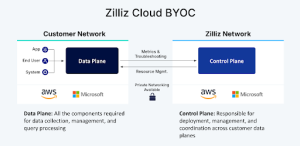As Bitcoin gradually becomes one of the mainstream digital assets worldwide, more and more investors are using it as a means of wealth appreciation. In 2025, as the cryptocurrency market further matures, how to purchase Bitcoin is no longer as complex as it used to be. However, for many beginners, facing the complexity and risks of the market, they still need some guidance and advice. This article will introduce the best methods for purchasing Bitcoin in 2025, helping beginners to participate more securely and conveniently.
To understand how to buy bitcoin, you can follow a few simple steps. First, choose a reliable cryptocurrency exchange or peer-to-peer platform where you can purchase Bitcoin using traditional currency. You’ll need to create an account, complete identity verification (if required), and link a payment method such as a bank account, credit card, or digital wallet. Alternatively, you can buy Bitcoin through Bitcoin ATMs, which allow cash purchases without needing an exchange account. Some individuals also trade Bitcoin directly with others using secure escrow services to ensure a safe transaction. Once purchased, it’s best to store your Bitcoin in a secure wallet, such as a hardware or software wallet, to protect your investment from cyber threats.
For any investor who wants to buy Bitcoin, choosing a reliable and secure trading platform is the first step. There are many different exchanges in the market, which can be mainly divided into the following categories:
1. * * Centralized Exchange (CEX) * *: This is the most common platform at present, such as Binance, Huobi, Coinbase, etc. Centralized exchanges allow users to directly purchase Bitcoin through fiat currencies such as Chinese yuan and US dollars, and support multiple payment methods such as bank card transfers and third-party payments. These platforms typically have user-friendly interfaces, fast trading speeds, and are suitable for beginners.
2. * * Decentralized Exchanges (DEX) * *: For example, Uniswap, Sushiswap, etc., decentralized exchanges complete transactions through smart contracts without the need for third-party intermediaries. Although DEX places more emphasis on privacy and decentralization compared to CEX, it may be challenging for beginners to operate and require a deeper understanding of blockchain knowledge.
3. P2P platform: This type of platform allows users to directly trade Bitcoin with others without the need for traditional exchanges. Common P2P platforms include LocalBitcoins, Binance P2P, etc. The advantage of such platforms is that users can flexibly choose payment methods, but they also need to carefully select transaction partners to avoid being deceived.
When choosing a trading platform, beginners need to focus on factors such as platform security, user experience, and transaction fees. Generally speaking, choosing platforms with good reputation and regulation will be safer.
After purchasing Bitcoin, how to store it is also a key issue. Bitcoin storage needs to be done through * * digital wallets * *, which mainly come in two types: hot wallets and cold wallets.
1. * * Hot Wallets * *: Hot wallets refer to those digital wallets connected to the Internet, which are easy to use and suitable for frequent transactions. Common hot wallets include mobile wallets (such as Trust Wallet, MetaMask, etc.) and desktop wallets (such as Exodus, Electrum, etc.). However, due to its network connectivity, its security is relatively low and it is vulnerable to hacker attacks.
2. * * Cold Wallets * *: Cold wallets refer to digital wallets that are not connected to the Internet. They are highly secure and suitable for long-term storage of Bitcoin. Cold wallets typically exist in the form of hardware devices such as Ledger, Trezor, etc. For investors who plan to hold Bitcoin for the long term, a cold wallet is the best choice.
No matter which wallet is chosen, * * backing up keys * * and * * enabling two factor authentication (2FA) * * are key measures to protect account security. Do not store the backup key in an insecure location and do not share it with others.
In 2025, the purchasing methods for Bitcoin will become more diversified. In addition to traditional bank transfers, users can also make purchases through the following methods:
1. * * fiat currency purchase * *: This is the most direct way to purchase Bitcoin through fiat currency (RMB, USD, etc.), suitable for beginners. Most centralized exchanges support this method. Users can use bank cards, Alipay, WeChat payment and other methods to purchase directly.
2. * * Credit/Debit Card Purchase * *: Some exchanges support the use of credit or debit cards to purchase Bitcoin. Although this method is simple and fast, it should be noted that transaction fees are high, and credit card companies may set restrictions on cryptocurrency transactions.
3. * * OTC trading * *: For bulk trading or private trading, OTC (over-the-counter) trading is a more convenient way. This method is usually used to purchase a large amount of Bitcoin at once and can be completed through third-party platforms or private buying and selling.
4. * * Fixed investment method * *: If you are a long-term investor, you can consider purchasing Bitcoin in fixed amounts on a regular basis, that is, through a fixed investment (DCA) strategy, buying Bitcoin at fixed time intervals with a fixed amount, which can spread out the market’s volatility risk.
The price of Bitcoin fluctuates dramatically, making it particularly important for beginners to understand market trends and manage risks effectively. Here are some common market risks and countermeasures:
1. Market volatility: The price of Bitcoin is highly volatile and may experience drastic fluctuations in the short term. Novice investors should set up stop loss and take profit strategies to avoid excessive losses caused by emotional decisions.
2. * * Fraud Risk * *: The cryptocurrency market is filled with various fraudulent activities, including fake ICOs, fake exchanges, phishing websites, etc. Novices need to be particularly vigilant about these fraud traps and ensure that transactions are conducted on legitimate platforms.
3. Regulatory Policies: Different countries and regions have different regulatory policies for Bitcoin, and some regions may impose restrictions or interventions on cryptocurrency trading. Investors should pay attention to changes in local regulatory policies to avoid unnecessary losses due to policy risks.
With the development of the Bitcoin market, more and more countries are strengthening their regulation of cryptocurrencies. Therefore, when purchasing Bitcoin, beginners need to not only pay attention to market price fluctuations, but also understand the relevant tax and legal responsibilities.
1. * * Tax Issues * *: In some countries, transactions and profits of cryptocurrencies such as Bitcoin are subject to taxation. For example, investors in the United States are required to pay capital gains tax on the appreciation of Bitcoin. Although China has not yet clarified its tax policies for cryptocurrencies, investors are still advised to stay informed and stay up-to-date with the latest tax regulations.
2. Legal risk: The anonymity and decentralized nature of Bitcoin make it easy to be used for illegal transactions, so regulatory agencies in various countries strictly monitor it. Investors need to understand the cryptocurrency related laws of their country to ensure that their trading activities are legal.
Bitcoin, as an innovative digital asset, remains an investment field full of opportunities in 2025. For beginners, mastering the correct purchasing methods and risk management skills is very important. By choosing the appropriate trading platform, ensuring wallet security, choosing the appropriate purchasing method, paying attention to market dynamics and risk control, and understanding tax and legal responsibilities, you can participate in Bitcoin investment more securely and efficiently. Always maintain a cautious attitude and make long-term investment plans in order to gain an advantage in this cryptocurrency revolution.




